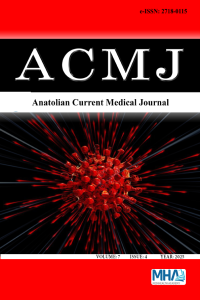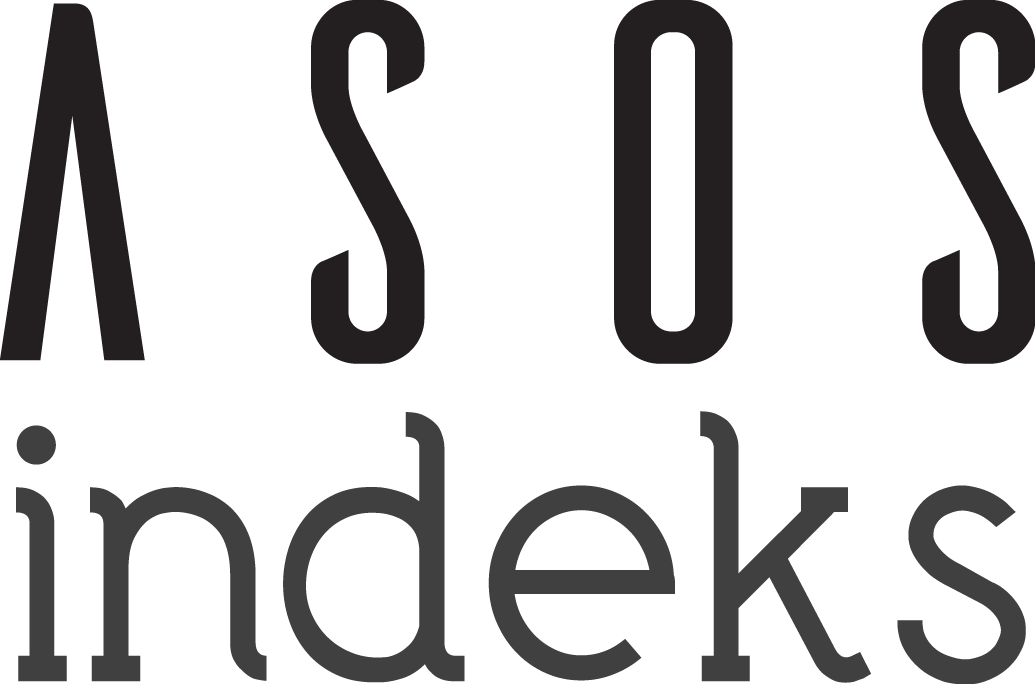Intraoperative perineural hyaluronic acid injection does not improve outcomes after carpal tunnel release in moderate-to-severe CTS: a retrospective cohort study
Abstract
Aims: This study aims to evaluate whether intraoperative perineural hyaluronic acid (HA) injection provides additional clinical or electrophysiological benefits beyond standard carpal tunnel release (CTR) in patients with moderate-to-severe carpal tunnel syndrome (CTS).
Methods: In this retrospective cohort study, 130 patients with electrophysiologically confirmed moderate-to-severe CTS underwent either CTR alone (n=66) or CTR with intraoperative perineural HA injection (n=64). HA (Alsegovisc®, 40 mg/2 ml, 1500 kDa) was administered following surgical decompression. Outcomes included pain (Visual Analog Scale, VAS), symptom severity and function (Boston Carpal Tunnel Questionnaire, BCTQ), sensory and motor conduction (SNCV, DML), and achievement of patient-centered benchmarks (minimal clinically important difference, MCID; patient acceptable symptom state, PASS). Evaluations were carried out pre-surgically and at 3- and 6-month intervals following the procedures.
Results: Both groups demonstrated significant improvements in pain (VAS: 7.0 to 2.0), symptom severity (BCTQ-SSS: 45.0 to 18.0), function (BCTQ-FSS: 34.5 to 13.5), and electrophysiological parameters (SNCV: 31.4 to 40.5 m/s; DML: 5.5 to 4.2 ms) over 6 months (all p<0.001). However, The comparison did not yield statistically significant results between groups at any time point (p>0.05), and effect sizes were consistently small (Cohen’s d<0.2). MCID and PASS thresholds were met by >68% of patients in both groups. Subgroup analyses revealed no predictive value for baseline disease severity or thenar atrophy.
Conclusion: Intraoperative perineural HA injection did not confer additional clinical or electrophysiological benefit over CTR alone in moderate-to-severe CTS. Despite compelling preclinical data, HA's efficacy may be attenuated in chronic fibrotic nerve compression due to pharmacokinetic and tissue-level limitations. These findings do not support routine use of intraoperative HA in advanced CTS but highlight the need for future prospective trials targeting earlier-stage disease, sustained-release formulations, or repeated dosing strategies.
Keywords
Carpal tunnel syndrome hyaluronic acid perineural injection carpal tunnel release moderate to severe neuropathy
Ethical Statement
This study was approved by the Institutional Ethics Committee of Bursa City Hospital (Approval No: 2025-5/2, Date: 5 March 2025).
References
- Atroshi I, Gummesson C, Johnsson R, Ornstein E, Ranstam J, Rosen I. Prevalence for clinically proved carpal tunnel syndrome is 4 percent. Lakartidningen. 2000;97(14):1668-1670.
- Güven SC, Özçakar L, Kaymak B, Kara M, Akıncı A. Short-term effectiveness of platelet-rich plasma in carpal tunnel syndrome: a controlled study. J Tissue Eng Regen Med. 2019;13(5):709-714. doi:10. 1002/term.2815
- Burton CL, Chesterton LS, Chen Y, Van Der Windt DA. Clinical course and prognostic factors in conservatively managed carpal tunnel syndrome: a systematic review. Arch Phys Med Rehabil. 2016;97(5):836-852.e1. doi:10.1016/j.apmr.2015.09.013
- DeStefano F, Nordstrom DL, Vierkant RA. Long-term symptom outcomes of carpal tunnel syndrome and its treatment. J Hand Surg Am. 1997;22(2):200-210. doi:10.1016/S0363-5023(97)80152-9
- Chen SR, Shen YP, Ho TY, et al. One-year efficacy of platelet-rich plasma for moderate-to-severe carpal tunnel syndrome: a prospective, randomized, double-blind, controlled trial. Arch Phys Med Rehabil. 2021;102(5):951-958. doi:10.1016/j.apmr.2020.12.025
- O'Connor D, Marshall SC, Massy-Westropp N, Pitt V, Group CN. Non-surgical treatment (other than steroid injection) for carpal tunnel syndrome. Cochrane Database Syst Rev. 2003;2003(1):CD003219. doi:10. 1002/14651858.CD003219
- Bland JD. Treatment of carpal tunnel syndrome. Muscle & Nerve. 2007; 36(2):167-171. doi:10.1002/mus.20802
- Huisstede BM, Hoogvliet P, Randsdorp MS, Glerum S, van Middelkoop M, Koes BW. Carpal tunnel syndrome. Part I: effectiveness of nonsurgical treatments–a systematic review. Arch Phys Med Rehabil. 2010;91(7):981-1004. doi:10.1016/j.apmr.2010.03.022
- Wu YT, Ke MJ, Ho TY, Li TY, Shen YP, Chen LC. Randomized double-blinded clinical trial of 5% dextrose versus triamcinolone injection for carpal tunnel syndrome patients. Ann Neurol. 2018;84(4):601-610. doi: 10.1002/ana.25332
- Li TY, Chen SR, Shen YP, et al. Long-term outcome after perineural injection with 5% dextrose for carpal tunnel syndrome: a retrospective follow-up study. Rheumatology. 2021;60(2):881-887. doi:10.1093/rheumatology/keaa361
- Durgut F, Şahin E, Akar MS,Özdemir A, Yiğit Ş. The effects of surgical timing on treatment outcomes in carpal tunnel syndrome. Bezmialem Science. 2022;10(5):633-636. doi:10.14235/bas.galenos.2021.6714
- Aboonq MS. Pathophysiology of carpal tunnel syndrome. Neurosciences (Riyadh). 2015;20(1):4-9.
- Mathew MM, Gaur R, Gonnade N, et al. Efficacy of ultrasound-guided particulate versus nonparticulate steroid injection in carpal tunnel syndrome: an open-label randomized control trial. Cureus. 2022;14(1): e21591. doi:10.7759/cureus.21591
- Lai CY, Li TY, Lam KHS, et al. The long-term analgesic effectiveness of platelet-rich plasma injection for carpal tunnel syndrome: a cross-sectional cohort study. Pain Med. 2022;23(7):1249-1258. doi:10.1093/pm/pnac011
- 15. Ikeda K, Yamauchi D, Osamura N, Hagiwara N, Tomita K. Hyaluronic acid prevents peripheral nerve adhesion. Br J Plast Surg. 2003;56(4):342-347. doi:10.1016/s0007-1226(03)00197-8
- Seckel BR, Jones D, Hekimian K, Wang KK, Chakalis D, Costas P. Hyaluronic acid through a new injectable nerve guide delivery system enhances peripheral nerve regeneration in the rat. J Neurosci Res. 1995; 40(3):318-324. doi:10.1002/jnr.490400305
- Mekaj A, Manxhuka-Kerliu S, Morina A, Duci S, Shahini L, Mekaj Y. Effects of hyaluronic acid and tacrolimus on the prevention of perineural scar formation and on nerve regeneration after sciatic nerve repair in a rabbit model. Eur J Trauma Emerg Surg. 2017;43(4):497-504. doi:10.1007/s00068-016-0683-4
- Su YC, Shen YP, Li TY, Ho TY, Chen LC, Wu YT. The efficacy of hyaluronic acid for carpal tunnel syndrome: a randomized double-blind clinical trial. Pain Med. 2021;22(11):2676-2685. doi:10.1093/pm/pnab109
- Padua L, LoMonaco M, Gregori B, Valente EM, Padua R, Tonali P. Neurophysiological classification and sensitivity in 500 carpal tunnel syndrome hands. Acta Neurol Scand. 1997;96(4):211-217. doi:10.1111/j. 1600-0404.1997.tb00271.x
- Levine DW, Simmons BP, Koris MJ, et al. A self-administered questionnaire for the assessment of severity of symptoms and functional status in carpal tunnel syndrome. J Bone Joint Surg Am. 1993;75(11): 1585-1592. doi:10.2106/00004623-199311000-00002
- Jablecki C, Andary M, Floeter M, et al. Practice parameter: electrodiagnostic studies in carpal tunnel syndrome [RETIRED] report of the American association of electrodiagnostic medicine, American academy of neurology, and the American academy of physical medicine and rehabilitation. Neurology. 2002;58(11):1589-1592.
- Wang KK, Nemeth IR, Seckel BR, et al. Hyaluronic acid enhances peripheral nerve regeneration in vivo. Microsurgery. 1998;18(4):270-275. doi:10.1002/(sici)1098-2752(1998)18:4<270::aid-micr11>3.0.co;2-v
- Özgenel GY. Effects of hyaluronic acid on peripheral nerve scarring and regeneration in rats. Microsurgery. 2003;23(6):575-581. doi:10.1002/micr.10209
- Mackinnon SE. Pathophysiology of nerve compression. Hand Clin. 2002;18(2):231-241. doi:10.1016/s0749-0712(01)00012-9
- Mondelli M, Reale F, Padua R, Aprile I, Padua L. Clinical and neurophysiological outcome of surgery in extreme carpal tunnel syndrome. Clin Neurophysiol. 2001;112(7):1237-1242. doi:10.1016/s1388-2457(01)00555-7
- Leite JCdC, Jerosch-Herold C, Song F. A systematic review of the psychometric properties of the Boston Carpal Tunnel Questionnaire. MC Musculoskelet Disord. 2006;7:78. doi:10.1186/1471-2474-7-78
- Nagaoka M, Nagao S, Matsuzaki H. Endoscopic carpal tunnel release in the elderly. Minim Invasive Neurosurg. 2006;49(4):216-219. doi:10.1055/ s-2006-947999
- Park IJ, Kim HM, Lee SU, Lee JY, Jeong C. Opponensplasty using palmaris longus tendon and flexor retinaculum pulley in patients with severe carpal tunnel syndrome. Arch Orthop Trauma Surg. 2010;130(7): 829-834. doi:10.1007/s00402-010-1053-z
- Stepić N, Novaković M, Martić V, Perić D. Effects of perineural steroid injections on median nerve conduction during the carpal tunnel release. Vojnosanit Pregl. 2008;65(11):825-829. doi:10.2298/vsp0811825s
- Demirci S, Kutluhan S, Koyuncuoglu RH, et al. Comparison of open carpal tunnel release and local steroid treatment outcomes in idiopathic carpal tunnel syndrome. Rheumatol Int. 2002;22(1):33-37. doi:10.1007/s00296-002-0184-0
- Hameso A, Bland J. Prevalence of decompression surgery in patients with carpal tunnel syndrome 8 years after initial treatment with a local corticosteroid injection. J Hand Surg Eur Vol. 2017;42(3):275-280. doi: 10.1177/1753193416671102
- Azizi F, Gharesoo FS, Eidy F, et al. A systematic review and meta-analysis of the effectiveness of perineural dextrose injection in peripheral compression neuropathies of the upper limbs. Heliyon. 2025;11(1):e41622. doi:10.1016/j.heliyon.2025.e41622
- Nasiri A, Rezaei Motlagh F, Vafaei MA. Efficacy comparison between ultrasound-guided injections of 5% dextrose with corticosteroids in carpal tunnel syndrome patients. Neurol Res. 2023; 45(6):554-563. doi:10. 1080/01616412.2022.2164453
- Wu YT, Wu CH, Lin JA, Su DCJ, Hung CY, Lam SK. Efficacy of 5% dextrose water injection for peripheral entrapment neuropathy: a narrative review. Int J Mol Sci. 2021;22(22):12358. doi:10.3390/ijms 222212358
- Ho TY, Chen SR, Li TY, et al. Prognostic factors in carpal tunnel syndrome treated with 5% dextrose perineural injection: a retrospective study. Int J Med Sci. 2021;18(9):1960-1965. doi:10.7150/ijms.5614236
- Du L, Zeng C, Ren X, et al. Hyaluronic acid-based therapy for alleviating early lipid peroxidation in peripheral nerve compression injury repair. World Neurosurg. 2025;197:123818. doi:10.1016/j.wneu.2025.123818
- Salathia S, Gigliobianco MR, Casadidio C, Di Martino P, Censi R. Hyaluronic acid-based nanosystems for CD44 mediated anti-inflammatory and antinociceptive activity. nt J Mol Sci. 2023;24(8):7286. doi:10.3390/ijms24087286
- Neumann A, Schinzel R, Palm D, Riederer P, Münch G. High molecular weight hyaluronic acid inhibits advanced glycation endproduct-induced NF-κB activation and cytokine expression. FEBS Lett. 1999;453(3):283-287. doi:10.1016/s0014-5793(99)00731-0
- Gupta RC, Lall R, Srivastava A, Sinha A. Hyaluronic acid: molecular mechanisms and therapeutic trajectory. Front Vet Sci. 2019;6:192. doi: 10.3389/fvets.2019.00192
Intraoperative perineural hyaluronic acid injection does not improve outcomes after carpal tunnel release in moderate-to-severe CTS: a retrospective cohort study
Abstract
Aims: This study aims to evaluate whether intraoperative perineural hyaluronic acid (HA) injection provides additional clinical or electrophysiological benefits beyond standard carpal tunnel release (CTR) in patients with moderate-to-severe carpal tunnel syndrome (CTS).
Methods: In this retrospective cohort study, 130 patients with electrophysiologically confirmed moderate-to-severe CTS underwent either CTR alone (n=66) or CTR with intraoperative perineural HA injection (n=64). HA (Alsegovisc®, 40 mg/2 ml, 1500 kDa) was administered following surgical decompression. Outcomes included pain (Visual Analog Scale, VAS), symptom severity and function (Boston Carpal Tunnel Questionnaire, BCTQ), sensory and motor conduction (SNCV, DML), and achievement of patient-centered benchmarks (minimal clinically important difference, MCID; patient acceptable symptom
state, PASS). Evaluations were carried out pre-surgically and at 3- and 6-month intervals following the procedures.
Results: Both groups demonstrated significant improvements in pain (VAS: 7.0 to 2.0), symptom severity (BCTQ-SSS: 45.0 to 18.0), function (BCTQ-FSS: 34.5 to 13.5), and electrophysiological parameters (SNCV: 31.4 to 40.5 m/s; DML: 5.5 to 4.2 ms) over 6 months (all p<0.001). However, The comparison did not yield statistically significant results between groups at any time point (p>0.05), and effect sizes were consistently small (Cohen’s d<0.2). MCID and PASS thresholds were met by >68% of patients in both groups. Subgroup analyses revealed no predictive value for baseline disease severity or thenar atrophy.
Conclusion: Intraoperative perineural HA injection did not confer additional clinical or electrophysiological benefit over CTR alone in moderate-to-severe CTS. Despite compelling preclinical data, HA's efficacy may be attenuated in chronic fibrotic nerve compression due to pharmacokinetic and tissue-level limitations. These findings do not support routine use of intraoperative HA in advanced CTS but highlight the need for future prospective trials targeting earlier-stage disease, sustained-release formulations, or repeated dosing strategies.
Keywords
Carpal tunnel syndrome hyaluronic acid perineural injection carpal tunnel release moderate to severe neuropathy
References
- Atroshi I, Gummesson C, Johnsson R, Ornstein E, Ranstam J, Rosen I. Prevalence for clinically proved carpal tunnel syndrome is 4 percent. Lakartidningen. 2000;97(14):1668-1670.
- Güven SC, Özçakar L, Kaymak B, Kara M, Akıncı A. Short-term effectiveness of platelet-rich plasma in carpal tunnel syndrome: a controlled study. J Tissue Eng Regen Med. 2019;13(5):709-714. doi:10. 1002/term.2815
- Burton CL, Chesterton LS, Chen Y, Van Der Windt DA. Clinical course and prognostic factors in conservatively managed carpal tunnel syndrome: a systematic review. Arch Phys Med Rehabil. 2016;97(5):836-852.e1. doi:10.1016/j.apmr.2015.09.013
- DeStefano F, Nordstrom DL, Vierkant RA. Long-term symptom outcomes of carpal tunnel syndrome and its treatment. J Hand Surg Am. 1997;22(2):200-210. doi:10.1016/S0363-5023(97)80152-9
- Chen SR, Shen YP, Ho TY, et al. One-year efficacy of platelet-rich plasma for moderate-to-severe carpal tunnel syndrome: a prospective, randomized, double-blind, controlled trial. Arch Phys Med Rehabil. 2021;102(5):951-958. doi:10.1016/j.apmr.2020.12.025
- O'Connor D, Marshall SC, Massy-Westropp N, Pitt V, Group CN. Non-surgical treatment (other than steroid injection) for carpal tunnel syndrome. Cochrane Database Syst Rev. 2003;2003(1):CD003219. doi:10. 1002/14651858.CD003219
- Bland JD. Treatment of carpal tunnel syndrome. Muscle & Nerve. 2007; 36(2):167-171. doi:10.1002/mus.20802
- Huisstede BM, Hoogvliet P, Randsdorp MS, Glerum S, van Middelkoop M, Koes BW. Carpal tunnel syndrome. Part I: effectiveness of nonsurgical treatments–a systematic review. Arch Phys Med Rehabil. 2010;91(7):981-1004. doi:10.1016/j.apmr.2010.03.022
- Wu YT, Ke MJ, Ho TY, Li TY, Shen YP, Chen LC. Randomized double-blinded clinical trial of 5% dextrose versus triamcinolone injection for carpal tunnel syndrome patients. Ann Neurol. 2018;84(4):601-610. doi: 10.1002/ana.25332
- Li TY, Chen SR, Shen YP, et al. Long-term outcome after perineural injection with 5% dextrose for carpal tunnel syndrome: a retrospective follow-up study. Rheumatology. 2021;60(2):881-887. doi:10.1093/rheumatology/keaa361
- Durgut F, Şahin E, Akar MS,Özdemir A, Yiğit Ş. The effects of surgical timing on treatment outcomes in carpal tunnel syndrome. Bezmialem Science. 2022;10(5):633-636. doi:10.14235/bas.galenos.2021.6714
- Aboonq MS. Pathophysiology of carpal tunnel syndrome. Neurosciences (Riyadh). 2015;20(1):4-9.
- Mathew MM, Gaur R, Gonnade N, et al. Efficacy of ultrasound-guided particulate versus nonparticulate steroid injection in carpal tunnel syndrome: an open-label randomized control trial. Cureus. 2022;14(1): e21591. doi:10.7759/cureus.21591
- Lai CY, Li TY, Lam KHS, et al. The long-term analgesic effectiveness of platelet-rich plasma injection for carpal tunnel syndrome: a cross-sectional cohort study. Pain Med. 2022;23(7):1249-1258. doi:10.1093/pm/pnac011
- 15. Ikeda K, Yamauchi D, Osamura N, Hagiwara N, Tomita K. Hyaluronic acid prevents peripheral nerve adhesion. Br J Plast Surg. 2003;56(4):342-347. doi:10.1016/s0007-1226(03)00197-8
- Seckel BR, Jones D, Hekimian K, Wang KK, Chakalis D, Costas P. Hyaluronic acid through a new injectable nerve guide delivery system enhances peripheral nerve regeneration in the rat. J Neurosci Res. 1995; 40(3):318-324. doi:10.1002/jnr.490400305
- Mekaj A, Manxhuka-Kerliu S, Morina A, Duci S, Shahini L, Mekaj Y. Effects of hyaluronic acid and tacrolimus on the prevention of perineural scar formation and on nerve regeneration after sciatic nerve repair in a rabbit model. Eur J Trauma Emerg Surg. 2017;43(4):497-504. doi:10.1007/s00068-016-0683-4
- Su YC, Shen YP, Li TY, Ho TY, Chen LC, Wu YT. The efficacy of hyaluronic acid for carpal tunnel syndrome: a randomized double-blind clinical trial. Pain Med. 2021;22(11):2676-2685. doi:10.1093/pm/pnab109
- Padua L, LoMonaco M, Gregori B, Valente EM, Padua R, Tonali P. Neurophysiological classification and sensitivity in 500 carpal tunnel syndrome hands. Acta Neurol Scand. 1997;96(4):211-217. doi:10.1111/j. 1600-0404.1997.tb00271.x
- Levine DW, Simmons BP, Koris MJ, et al. A self-administered questionnaire for the assessment of severity of symptoms and functional status in carpal tunnel syndrome. J Bone Joint Surg Am. 1993;75(11): 1585-1592. doi:10.2106/00004623-199311000-00002
- Jablecki C, Andary M, Floeter M, et al. Practice parameter: electrodiagnostic studies in carpal tunnel syndrome [RETIRED] report of the American association of electrodiagnostic medicine, American academy of neurology, and the American academy of physical medicine and rehabilitation. Neurology. 2002;58(11):1589-1592.
- Wang KK, Nemeth IR, Seckel BR, et al. Hyaluronic acid enhances peripheral nerve regeneration in vivo. Microsurgery. 1998;18(4):270-275. doi:10.1002/(sici)1098-2752(1998)18:4<270::aid-micr11>3.0.co;2-v
- Özgenel GY. Effects of hyaluronic acid on peripheral nerve scarring and regeneration in rats. Microsurgery. 2003;23(6):575-581. doi:10.1002/micr.10209
- Mackinnon SE. Pathophysiology of nerve compression. Hand Clin. 2002;18(2):231-241. doi:10.1016/s0749-0712(01)00012-9
- Mondelli M, Reale F, Padua R, Aprile I, Padua L. Clinical and neurophysiological outcome of surgery in extreme carpal tunnel syndrome. Clin Neurophysiol. 2001;112(7):1237-1242. doi:10.1016/s1388-2457(01)00555-7
- Leite JCdC, Jerosch-Herold C, Song F. A systematic review of the psychometric properties of the Boston Carpal Tunnel Questionnaire. MC Musculoskelet Disord. 2006;7:78. doi:10.1186/1471-2474-7-78
- Nagaoka M, Nagao S, Matsuzaki H. Endoscopic carpal tunnel release in the elderly. Minim Invasive Neurosurg. 2006;49(4):216-219. doi:10.1055/ s-2006-947999
- Park IJ, Kim HM, Lee SU, Lee JY, Jeong C. Opponensplasty using palmaris longus tendon and flexor retinaculum pulley in patients with severe carpal tunnel syndrome. Arch Orthop Trauma Surg. 2010;130(7): 829-834. doi:10.1007/s00402-010-1053-z
- Stepić N, Novaković M, Martić V, Perić D. Effects of perineural steroid injections on median nerve conduction during the carpal tunnel release. Vojnosanit Pregl. 2008;65(11):825-829. doi:10.2298/vsp0811825s
- Demirci S, Kutluhan S, Koyuncuoglu RH, et al. Comparison of open carpal tunnel release and local steroid treatment outcomes in idiopathic carpal tunnel syndrome. Rheumatol Int. 2002;22(1):33-37. doi:10.1007/s00296-002-0184-0
- Hameso A, Bland J. Prevalence of decompression surgery in patients with carpal tunnel syndrome 8 years after initial treatment with a local corticosteroid injection. J Hand Surg Eur Vol. 2017;42(3):275-280. doi: 10.1177/1753193416671102
- Azizi F, Gharesoo FS, Eidy F, et al. A systematic review and meta-analysis of the effectiveness of perineural dextrose injection in peripheral compression neuropathies of the upper limbs. Heliyon. 2025;11(1):e41622. doi:10.1016/j.heliyon.2025.e41622
- Nasiri A, Rezaei Motlagh F, Vafaei MA. Efficacy comparison between ultrasound-guided injections of 5% dextrose with corticosteroids in carpal tunnel syndrome patients. Neurol Res. 2023; 45(6):554-563. doi:10. 1080/01616412.2022.2164453
- Wu YT, Wu CH, Lin JA, Su DCJ, Hung CY, Lam SK. Efficacy of 5% dextrose water injection for peripheral entrapment neuropathy: a narrative review. Int J Mol Sci. 2021;22(22):12358. doi:10.3390/ijms 222212358
- Ho TY, Chen SR, Li TY, et al. Prognostic factors in carpal tunnel syndrome treated with 5% dextrose perineural injection: a retrospective study. Int J Med Sci. 2021;18(9):1960-1965. doi:10.7150/ijms.5614236
- Du L, Zeng C, Ren X, et al. Hyaluronic acid-based therapy for alleviating early lipid peroxidation in peripheral nerve compression injury repair. World Neurosurg. 2025;197:123818. doi:10.1016/j.wneu.2025.123818
- Salathia S, Gigliobianco MR, Casadidio C, Di Martino P, Censi R. Hyaluronic acid-based nanosystems for CD44 mediated anti-inflammatory and antinociceptive activity. nt J Mol Sci. 2023;24(8):7286. doi:10.3390/ijms24087286
- Neumann A, Schinzel R, Palm D, Riederer P, Münch G. High molecular weight hyaluronic acid inhibits advanced glycation endproduct-induced NF-κB activation and cytokine expression. FEBS Lett. 1999;453(3):283-287. doi:10.1016/s0014-5793(99)00731-0
- Gupta RC, Lall R, Srivastava A, Sinha A. Hyaluronic acid: molecular mechanisms and therapeutic trajectory. Front Vet Sci. 2019;6:192. doi: 10.3389/fvets.2019.00192
Details
| Primary Language | English |
|---|---|
| Subjects | Orthopaedics |
| Journal Section | Research Articles |
| Authors | |
| Publication Date | July 28, 2025 |
| Submission Date | May 27, 2025 |
| Acceptance Date | July 7, 2025 |
| Published in Issue | Year 2025 Volume: 7 Issue: 4 |
TR DİZİN ULAKBİM and International Indexes (1b)
Interuniversity Board (UAK) Equivalency: Article published in Ulakbim TR Index journal [10 POINTS], and Article published in other (excuding 1a, b, c) international indexed journal (1d) [5 POINTS]
Note: Our journal is not WOS indexed and therefore is not classified as Q.
You can download Council of Higher Education (CoHG) [Yüksek Öğretim Kurumu (YÖK)] Criteria) decisions about predatory/questionable journals and the author's clarification text and journal charge policy from your browser. https://dergipark.org.tr/tr/journal/3449/file/4924/show
Journal Indexes and Platforms:
TR Dizin ULAKBİM, Google Scholar, Crossref, Worldcat (OCLC), DRJI, EuroPub, OpenAIRE, Turkiye Citation Index, Turk Medline, ROAD, ICI World of Journal's, Index Copernicus, ASOS Index, General Impact Factor, Scilit.The indexes of the journal's are;
The platforms of the journal's are;
|
The indexes/platforms of the journal are;
TR Dizin Ulakbim, Crossref (DOI), Google Scholar, EuroPub, Directory of Research Journal İndexing (DRJI), Worldcat (OCLC), OpenAIRE, ASOS Index, ROAD, Turkiye Citation Index, ICI World of Journal's, Index Copernicus, Turk Medline, General Impact Factor, Scilit
Journal articles are evaluated as "Double-Blind Peer Review"
All articles published in this journal are licensed under a Creative Commons Attribution 4.0 International License (CC BY 4.0)














